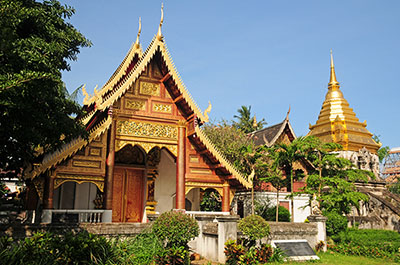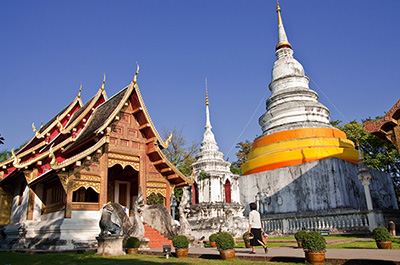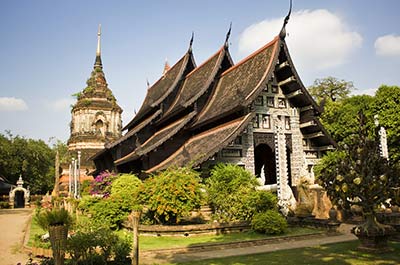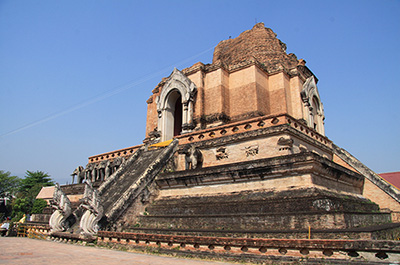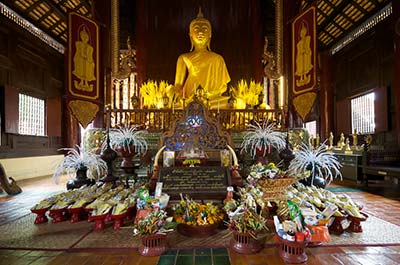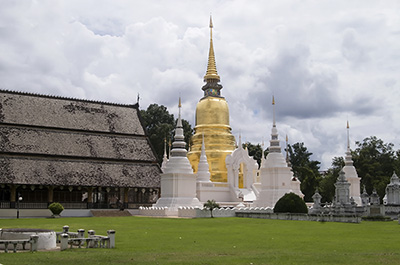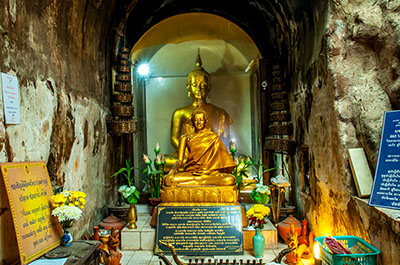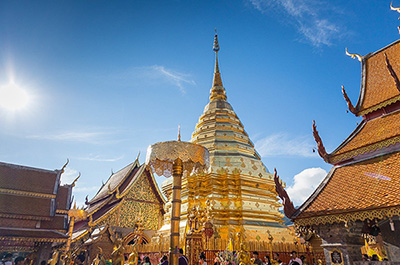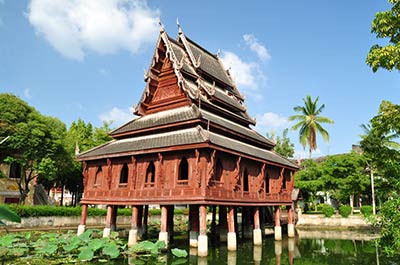Buddhist temples of Chiang Mai
Chiang Mai’s most important temples
Chiang Mai province and its capital city bearing the same name are the home of some of Thailand’s most magnificent temples. Where most of Bangkok’s temples date from the Rattanakosin era that started in 1782, many of Chiang Mai’s temples are much older dating back as far as the 13th century.
The oldest remaining structures
Because in those days temple structures were often built of wood that has not survived over the years, the oldest original structures still in existence today are usually the chedis that were built from stone.
The chedis were the first temple structures to be build, and contain relics of the Buddha, Kings or important monks. The other temple structures found today in the wats of Chiang Mai have been restored many times over the centuries, and sometimes have been completely rebuild.
Naga snakes
In Chiang Mai city alone, some 300 temples have been built often very richly decorated and containing beautiful mural paintings depicting scenes from the life of the Buddha on the walls inside. In many of the wats huge mythical snake creatures called Nagas can be found protecting the temple.
The oldest temples
The oldest temples of Chiang Mai can be found in the old part of the city, within the city walls and moats. The oldest temple is the Wat Chiang Man located within the old walled city. This temple was the first to be built after the founding of Chiang Mai city in 1296.
Just outside the city of Chiang Mai on top of Doi Suthep Mountain, one of the most important temples of North Thailand can be found. The Doi Suthep temple that was built in the 13th century plays an important role during important Buddhist holidays.
Temple architectural styles
The province hosts a huge number of temples built in various architectural styles, influenced by the various Kingdoms that have ruled the area over the centuries. Many of the regions temples are built in Lanna Thai style, others show Burmese, Mon, Sri Lankan and Rattanakosin (Bangkok) influence.
Haripunchai style
The Hariphunchai (Mon) Kingdom controlled the area from its capital Lamphun until 1292, when King Mengrai seized it and incorporated Hariphunchai into the Lanna Kingdom.
Lanna style
The Lanna Kingdom ruled Northern Thailand and parts of Burma for centuries and was at its strongest during the second half of the 15th century. Eventually Lanna declined and during the mid of the 16th century came under control of the Kingdom of Pegu in present day Myanmar, that occupied Lanna for more than two centuries.
Burmese style
During the 19th century immigrants from the Burmese Shan state came to the region brining with them their own style of temple architecture. The architecture of many of the more recent temples is influenced by the Rattanakosin (Bangkok) style.
Chiang Mai city temples
- Wat Chiang Man
- Wat Phra Singh
- Wat Chedi Luang
- Wat Lok Molee
- Wat Prasat
- Wat Suan Dok
- Wat Phan Tao
- Wat Buppharam
- Wat Phan On
- Wat Jed Yod
- Wat Umong
- Wat Inthakin
- Wat Phuak Hong
- Wat Chedi Liam
- Wat Muen Ngoen Kong
- Wat Dubphai
- Wat Chai Phra Kiat
- Wat Mahawan
- Wat Duang Di
- Wat Pa Pao
- Wat Chiang Yuen
- Wat Ou Sai Kham
